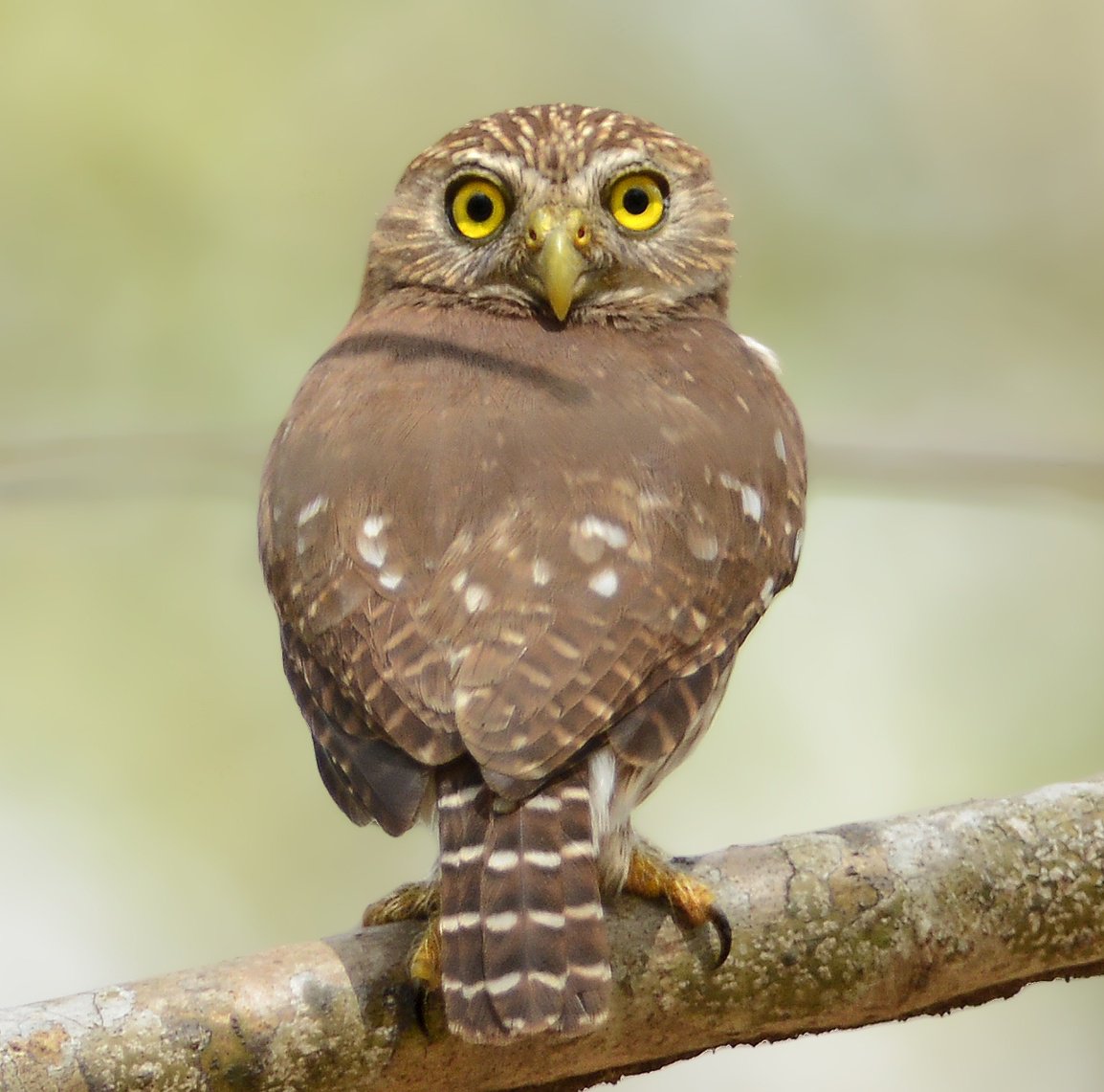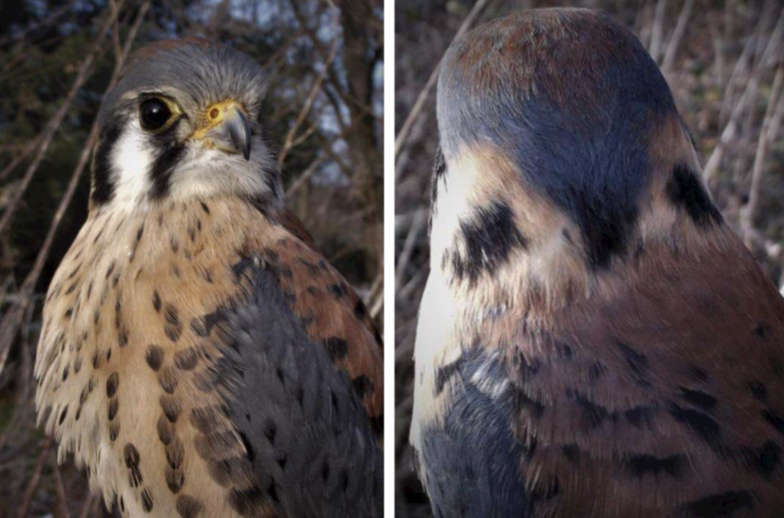Photos all from Lew Scharpf on Flickr (except the Kestrel)
I came across this last weekend and couldn’t believe I hadn’t seen there was an owl with eyes in the back of its head before! There are so many pics of different pygmy owls out there, but nobody was talking about this.
Lots of animals (fish, insects) have false eyes, but I hadn’t seen birds with them. The fancy name for them is ocelli. The only birds I can find with them are this little owl and the American Kestrel, another small raptor. It is thought it both distracts potential prey by not letting them know if they’ve been spotted or not, and also possibly to do the same to larger birds and other animals that would want to eat the owl.
It’s only about 6 inches / 15 cm tall, but it can take in pretty twice it’s size, thanks to those amazing raptor feet. They hunt during the day, and will eat large bugs, small lizards and mammals, and birds up you the size of doves. Unlike many owls, they have semetrical ears, so it’s thought they hunt mainly by site.
They live mostly in a Central and South America, but some are left in Arizona. Habitat loss is greatly affecting their numbers. The live in old nest cavities in trees and giant cactus, and wildfires and human activity have been bad for the environment they need to nest.
Bird facts from ABCbirds.com
 the real eyes in the front of the head
the real eyes in the front of the head
 still the real eyes, but now in the back, see, it tricked you!
still the real eyes, but now in the back, see, it tricked you!
 this is the kestrel
this is the kestrel
Fascinating stuff! It’s amazing how false eyes are more important to predators than prey. I have noticed that tigers have these too.
Both are equally as important, depending whose perspective you’re looking at.
Predators aren’t successful every time they strike. Species success seems to vary wildly between raptor species. I’ve seen claims of 10-60%, so some have to work harder than others. Each miss gets them one step closer to losing too much energy to survive.
This article is pretty technical, but it’s got some good results on raptor hunt success.
NIH Research Paper: When Hawks Attack
I haven’t read it all yet, but this part seemed of particular interest.
Studies of owls attacking simulated prey showed that sideways evasion was far more effective than dodging (turning toward the predator), and that both were significantly more effective than classical evasion. Prey evasion by dodging, swerving and steep take-offs has been explained theoretically as taking advantage of limited predator maneuverability and response time. However, a purely locomotive mechanism cannot explain the extremely low capture rate and high observed frequency of sideways evasion compared with dodging by rodents and multiple bird species fleeing actual or model raptors.


